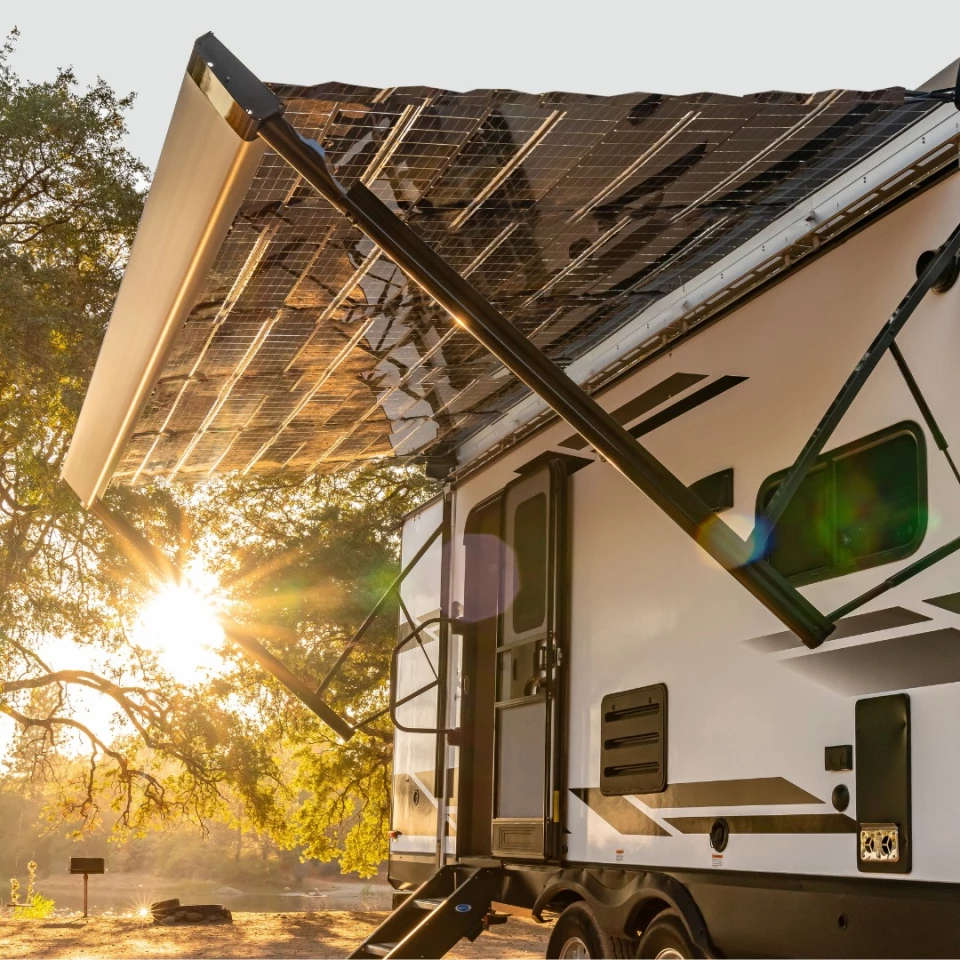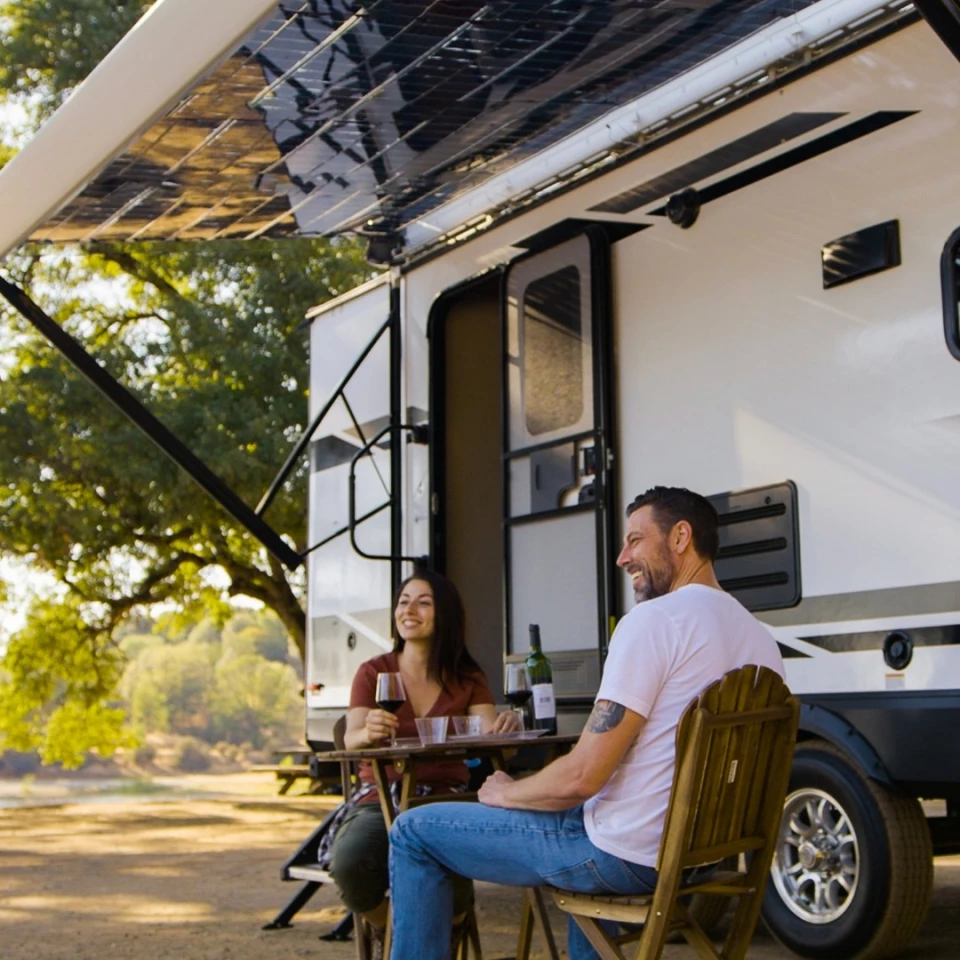An RV roof seems the perfect place to secure solar panels for onboard battery charging, right up until you try to squeeze them between and around the vents, skylights, air conditioner, antennas, racks and other roof-mounted components. California company Xponent Power looks to an alternative solution to provide more sunlight-capturing capability. Its auto-retracting Xpanse Solar Awning deploys at the push of a button and works like a large, on-demand solar panel, shading a big piece of ground next to the RV with up to 1,200 watts of charging power.
Xponent designed the Xpanse Solar Awning as a versatile solution for off-grid boondockers looking to camp away from campgrounds and electrical hookups for days at a time. The flexible product can be used as a vehicle's sole solar charging solution or wired into an existing solar setup. It's also designed to be mounted on either side of the RV to be used as a primary or secondary awning.
The 16 x 7-foot (4.9 x 2.1-m) "fabric" of the Xpanse awning is a semi-rigid grid of high-efficiency glass-based solar panels delivering a total of 800, 1,000 or 1,200 watts of charging, depending upon the model. Each "bi-facial" panel is capable of capturing solar energy not only on their top/front side but also on their base, pulling in light that reflects off the side of the RV and the ground for output above and beyond those quoted ratings.

In addition to easy push-button electric deployment, the Xpanse awning includes an auto-retraction system that pulls it back in during high-wind conditions. The rigid construction of the panels and the small air gaps between them combine for less flapping and instability in wind, according to Xponent. The multi-panel design also allows for the replacement of individual sections, should any damage occur.
While offering a few nice advantages over roof-mounted panels, the Xpanse awning has the disadvantage of having to be retracted during driving hours, missing out on key daylight charging time. The Xpanse charging wattages are on the high side, however, exceeding many of the roof-based systems incorporated as standard or optional equipment in various camper vans, large motorhomes and caravans. Plus, it can be used in conjunction with a roof-based system if more charging is needed.
As a quick comparison, the 1,200-watt flagship Xpanse offers higher output than the 700-watt system on the AEONrv we looked at this week, the 455-watt system on last year's Winnebago Ekko, and even the 1,000-watt system from the 2019 KZ Sonic X Concept. All three models are designed specifically for off-grid use, and the Sonic X was a 26-foot (8-m) show caravan meant to explore a comprehensive, next-gen off-grid package.
On the other end, Xponent's maximum 1,200 watts falls short of the 2,000-watt system on the Retreat ERV we looked at in late 2019. That Australian off-road caravan was designed to run entirely on electricity.

The 1,200-watt Xpanse awning is available for preorder now at an introductory price of US$7,550, a 24 percent discount on the planned $9,950 retail price. The 800- and 1,000-watt models are listed at respective $4,990 and $6,250 introductory prices. Locking in early bird pricing on each model requires a fully refundable $100 deposit. Xpanse plans to begin delivery in the second half of 2022, and installation will be included as part of the purchase. The company is working to set up an installer network.
Xponent also plans to work with RV manufacturers toward offering the Xpanse as a pre-installed vehicle option. In the longer term, it intends to expand its mobile solar solutions into a wide range of markets, including mobile medical, emergency relief, military and tiny homes.
We've dropped the general info video below, and Xponent also has some wind-testing clips on its YouTube channel.
Source: Xponent Power







